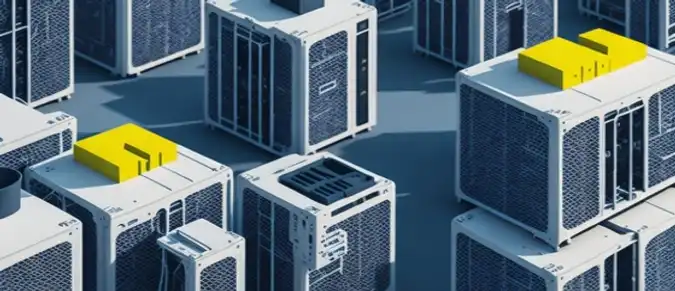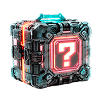Companies face challenges with local data storage, such as scalability, maintenance, and security. In response to these issues, cloud storage is becoming increasingly popular, offering scalability, flexibility, security, and cost-effectiveness. There is a significant forecasted growth in the global market for cloud storage. Dropbox, Sync, and Google Drive are examples of popular cloud storage solutions that utilize centralized providers. However, centralized solutions have drawbacks in terms of security and data management. Decentralized blockchain-based storage is emerging as a viable alternative, providing data processing efficiency and greater control.
Contents:
- What is decentralized storage?
- Principles of decentralized storage
- Storage Node Reputation Mechanism
- Comparison of decentralized and centralized approaches to data storage
- The Future Belongs to Decentralized Storage Systems
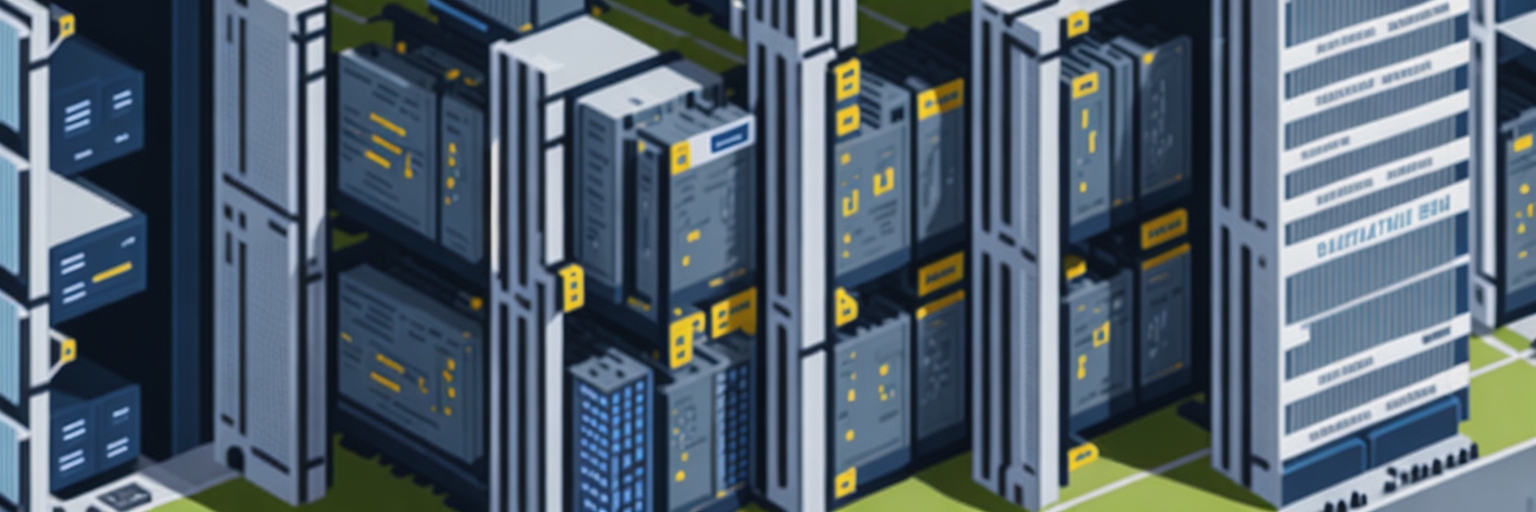
What is a decentralized storage?
Decentralized storage is a form of data storage based on a decentralized network using blockchain technology instead of centralized storage. Instead of storing data on a single server, it is distributed across various nodes in a decentralized network. This approach enhances the security and reliability of data, provides distribution and protection against errors and other potential risks.
One example of a decentralized data storage system is the InterPlanetary File System (IPFS). IPFS is a decentralized network for storing and exchanging files, where files are stored and retrieved from a distributed network of nodes. It provides:
- Increased security,
- Confidentiality,
- Scalability.
Another example is StorX, which allows users to securely encrypt, fragment, and distribute their data across different host nodes worldwide. Each file stored in StorX is divided into multiple components before encryption and stored in independent storage nodes managed by different operators located in different parts of the world. StorX is structured as a group of autonomous storage networks without a single operator having full access to a user's data. This enhances data security and protects the privacy of users' personal information.
In both cases, decentralized data storage systems provide users with full control and ownership of their data, instead of relying on third parties to manage and store the data.
Principles of Decentralized Storage
Let's consider an example of how StorX works to better understand its functioning. In StorX, a user uses their login and password to upload a file to the network. The network then generates a unique private key, encrypts the file, divides it into multiple fragments, and distributes them among independent nodes located around the world.
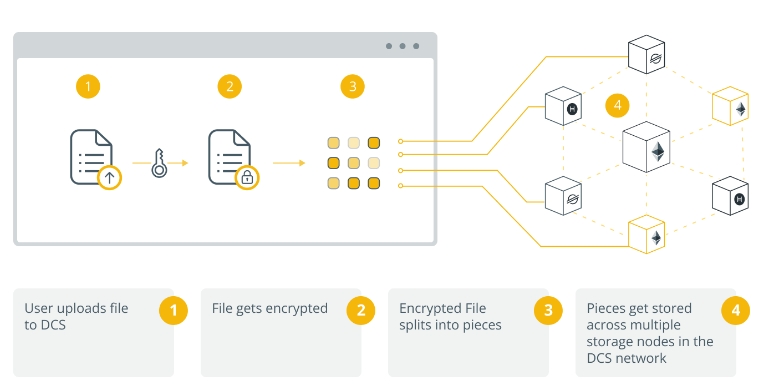
To ensure data reliability and availability, the network creates several copies of these fragments. This ensures that in case one of the nodes becomes unavailable, the data fragments can be recovered from alternative nodes. When a user wants to retrieve files, they log into the system using their credentials. This activates the private keys and initiates the file recovery process, allowing the user to regain access to their data.
Storage Node Reputation Mechanism
StorX has developed a reputation evaluation mechanism for storage nodes that promotes high-quality standards. This mechanism is managed by artificial intelligence and regularly assesses the quality of all storage nodes. Each node is assigned a quality rating based on the results of these evaluations.
The reputation mechanism takes into account several factors, including the node's efficiency, quality, location, and staking amount in SRX. The StorX network token, SRX, supports the platform's ecosystem. When it comes to efficiency, the mechanism considers security parameter updates and server operating system patches. The system also ensures that storage nodes are not concentrated with a single internet service provider or in one location.
Comparison of Decentralized and Centralized Approaches to Data Storage
The decentralized storage mechanism makes decentralized platforms an attractive option compared to centralized systems. Let's take StorX as an example and consider their performance:
Storage of Important Data
Unlike centralized storage systems that are prone to hacking risks and limitations, StorX offers a decentralized network consisting of over 4000 nodes worldwide. Thanks to this infrastructure, StorX is able to provide secure storage for critical data. All nodes in the network are high-quality server hardware located in data centers of at least Tier 3.
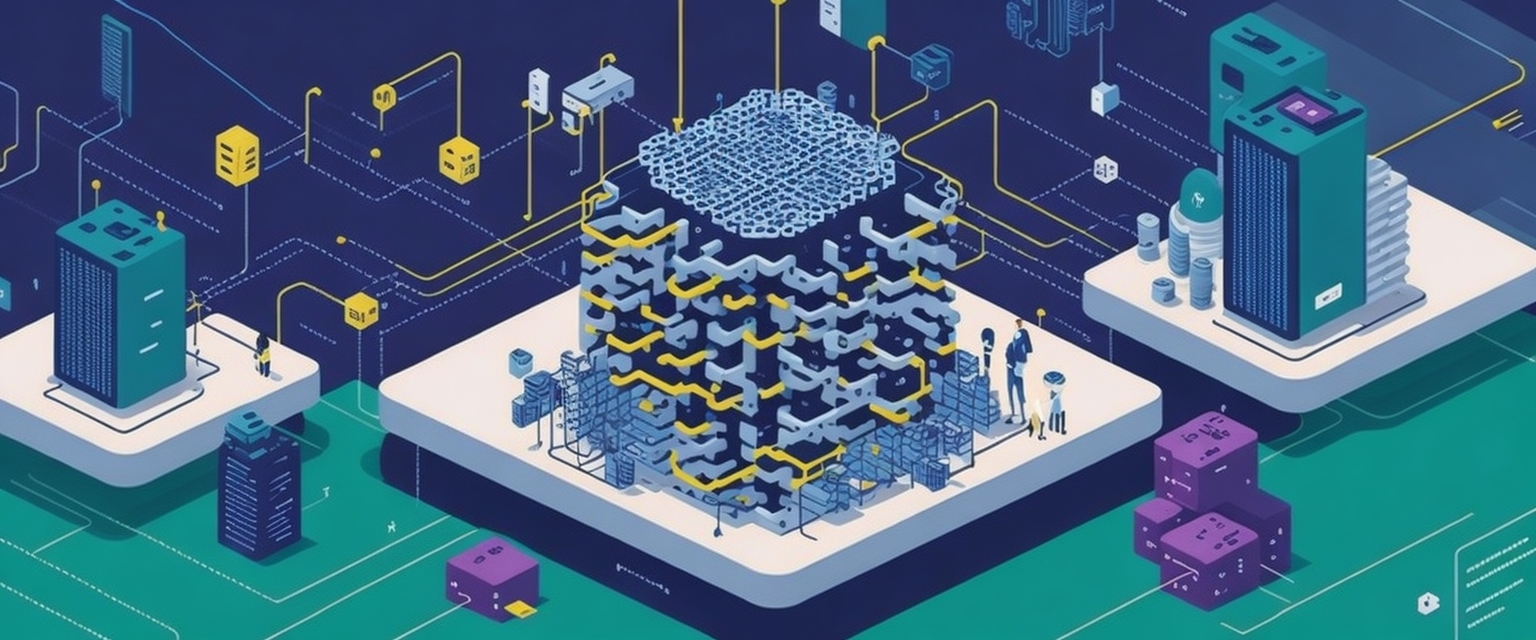
One of the key advantages of StorX is the restriction of access to public data. Only data owners or users with appropriate permissions can access the information stored in their accounts using private keys. Data security and confidentiality are a top priority for StorX.
Use of Encryption
Some centralized storage systems have sought to compete with decentralized storage systems by creating hybrid solutions that combine elements of decentralization and centralization but do not fully transfer decision-making to a distributed network.
Unlike such approaches, StorX offers a decentralized cloud storage that provides a high level of security for stored data. StorX uses both content and transport encryption, making the data more secure. The AES-256 encryption algorithm used by StorX has military-grade security, and data fragmentation methods ensure that no single node has full access to the data.
Advanced Cloud Storage
A table describing the key features of StorX:
| Features | Description |
|---|---|
| Storage Type | Combination of traditional cloud storage and decentralized data structure |
| Data Fragmentation | Yes |
| Data Distribution | Across multiple servers worldwide |
| Single Point of Failure | None |
| Fault Tolerance | Yes |
| Resistance to Censorship | Yes |
| Node Type | All nodes are servers |
| Data Durability | Yes |
| Increased Speed | Yes |
Unlike traditional storage methods where large volumes of data are stored in a single central source, decentralized storage involves having multiple nodes for data storage. In centralized systems, the access speed depends on various factors such as connectivity, bandwidth, and the number of processors on the server. However, in a decentralized system like StorX, the system reaches out to the network and retrieves data from nearby nodes, providing optimal data access speed.
The Future Belongs to Decentralized Storage Systems
In the future, decentralized storage systems are expected to become more popular as they possess numerous advantages compared to traditional centralized storage systems. They provide increased security, data confidentiality, and reliability. Additionally, they can reduce costs and ensure greater availability of storage resources.
It is anticipated that decentralized storage systems will have improved scalability, security, and user-friendliness in the future, making them more appealing to a wide range of users, including individuals and organizations. The growth in demand for decentralized data storage solutions will be driven by the proliferation of Internet of Things devices and other decentralized systems, leading to further innovation and research in this field.
